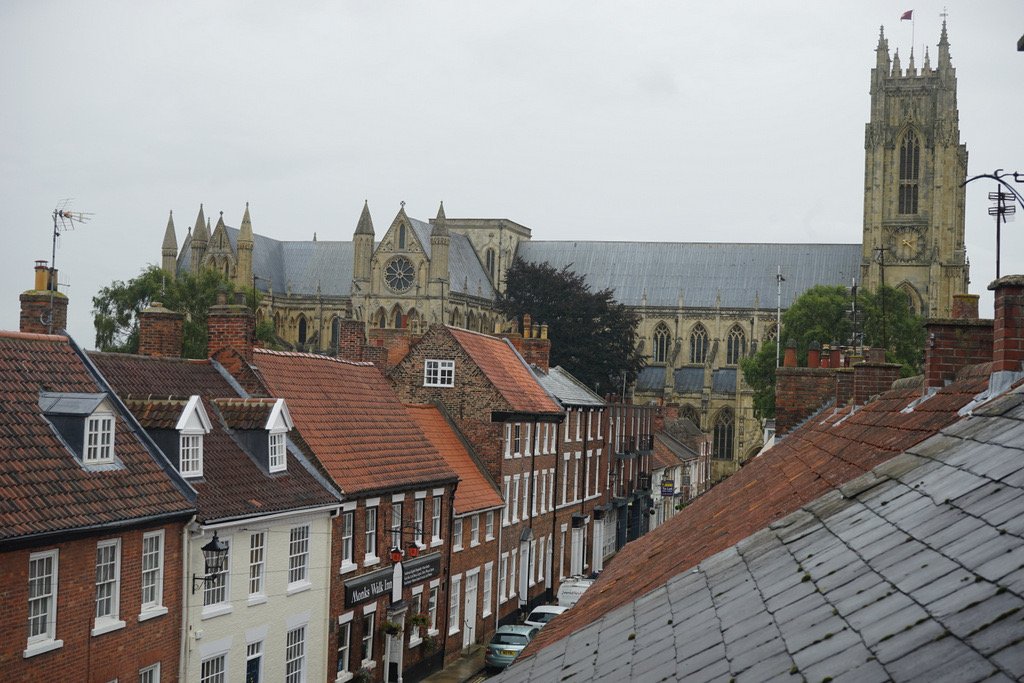Hunting for Mary Wollstonecraft’s house in Beverley, Yorkshire
This is the first in a series of guest blogs, running throughout 2022, from friends and fans of Mary Wollstonecraft - all working to keep her legacy alive.
By Barbara English of St Mary’s Church in Beverley, Yorkshire. The Church has unveiled plans for a series of carvings honouring nine "extraordinary individuals": all are women, and one of them is Mary Wollstonecraft (plaster cast pictured below), who lived in Beverley as a child.
Pictured above: A plaster cast of the carving of Mary Wollstonecraft that will soon be unveiled in St Mary's Church, Beverley, Yorkshire
All the great biographers have picked up the line in Godwin’s Memoir , “In Michaelmas 1768, Mr. Wollstonecraft again removed to a farm near Beverley in Yorkshire. Here the family remained for six years, and consequently, Mary did not quit this residence, till she had attained the age of fifteen years and five months”.
It is easy to interpret this as if the family stayed on the farm for six years: but the early letters contradict this. We now believe that they always lived in Beverley, and Edward Wollstonecraft went out of town to do whatever farming he wanted. “This residence” refers to Beverley and not the farm.
It was believed that the family lived in Wednesday Market, on the evidence of town account books showing Mr W [a wide variety of spellings] paying rates. A 20th century plaque in Wednesday Market affirmed this, but when we examined the rate books, we found that the heading of the relevant page was ‘Wednesday Market’ because that was the ward, but it in fact recorded the rates for several other surrounding streets, including Highgate which leads to Beverley Minster.
The view from the “unassuming” No. 2 Highgate, looking towards Beverley Minster
If you have delved into house history, you will know how difficult it is to find the right house when towns were slow to give street numbers and plots were sometimes divided. We did however get lucky, for soon after the Wollstonecraft family left the area, the house went to the Minster organists, a dynasty that remained there for nearly 100 years, long enough to be confident which house in Highgate it was. The identification was not helped by one rate book being in one record office, and its successor in a safe in another, not fully catalogued and only found by chance on another search by a colleague. Some pages had been torn out but fortunately not the ones vital for us.
There was great excitement. A cautious note was put through the door of unassuming No. 2 Highgate, hiding behind its Victorian windows, asking if there was any chance . . ? Fortunately the owner and tenants were delighted, and allowed us to see every room. It was unaltered Georgian: floors, panelling, skirting boards, and a wonderful staircase. From the top floor, where the children probably slept, views of the town north and south. In the small garden a Gothic privy (pictured below), but we can’t be sure of its age.
The Gothic privy in the garden at No. 2 Highgate
That was in 2018. We removed the old plaque and put up a new one, on 2 Highgate, unveiled by Dame Susan Cunliffe Lister, our first woman Lord Lieutenant, and celebrated after in Beverley’s major coaching inn, the Beverley Arms. On the walls outside danced a projection of Mary Wollstonecraft by Stewy: it was stormy and she danced a bit too much, but for a time it was amazing. (And yes, we did crib the idea from the Mary Wollstonecraft on Parliament.)
We very rarely have access to 2 Highgate, as it is a workplace. In the future we think it will revert to a private house, and perhaps be more accessible on Heritage Open Days. It was a wonderful adventure for us. We believe that it is the only house still standing* that Mary Wollstonecraft lived in.
“Up here the men are still puzzled when I go on about how immensely important she was/is and their brows always clear when I mention Frankenstein . . . it would be much easier to sell Mary Shelley!”
And soon the carving of Wollstonecraft on St Mary’s church will be unveiled – across the street from the dancing Mary. She is also going to be commemorated by a sculpture in the new Trinity College Dublin library, along with Lovelace, Gregory and Franklin.
*It may be the only house she lived in in England that is still standing, if we discount the Irish castle.
Author’s note: ‘We’ in this piece includes David and Susan Neave, historians, colleagues and friends, without whom this puzzle might never have been solved.
The second in our occasional series of guest blogs is coming soon. Please get in touch if you have an idea for a piece!



